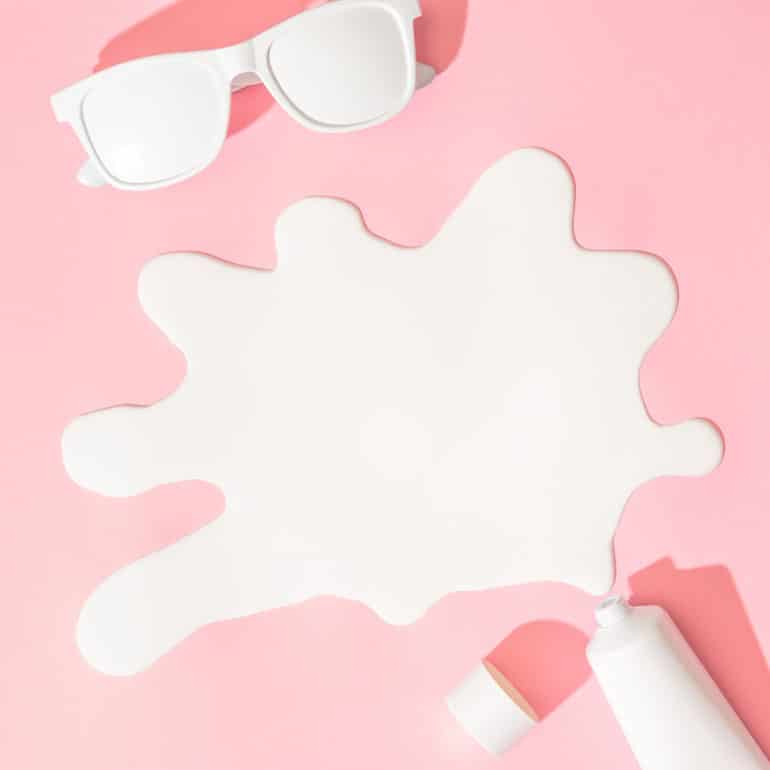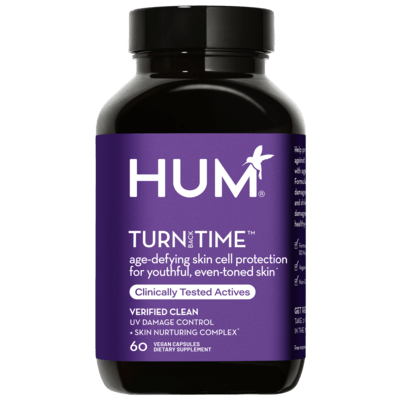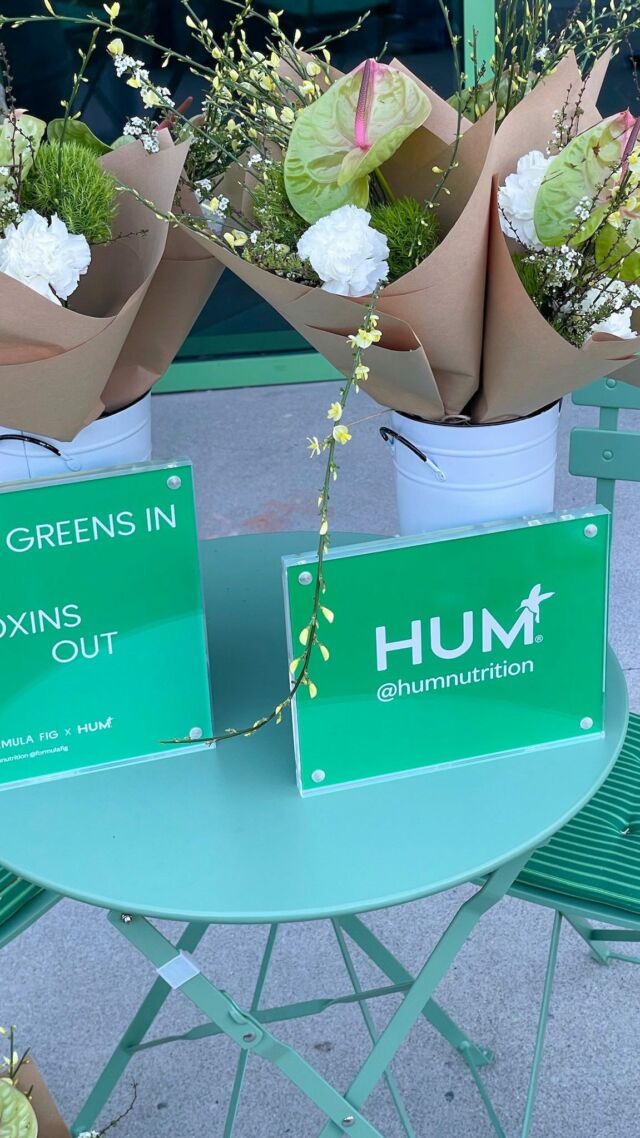Can exposure to chemicals outweigh the benefits of sunscreen?
Sunscreen has one main purpose: to protect your skin from harmful UV rays. Hopefully, we’ve all made a habit to use it. (Yes, even year round!) And most likely, we aim to buy the best—and sometimes priciest—formula for our skin. But if you haven’t heard, not all sunscreens are made equal. It’s important to note that there are two common types, chemical vs. physical sunscreen, that offer UV protection in different ways. Before basking in the summer sun, read up on this crucial sunscreen info.


Physical vs. chemical sunscreen
Mineral Sunscreen
Physical UV blockers, aka mineral sunscreens, are made with the active mineral components of titanium dioxide and/or zinc oxide. These ingredients act as a protective layer that sits on top of skin to deflect and disperse harmful sun rays. Non-nano 100% mineral sunscreen protects without penetrating the skin, so the body doesn’t absorb it. Mineral-based formulas are more suitable for people with sensitive skin or those who wish to avoid synthetic chemicals in skincare.Chemical Sunscreen
Chemical UV blockers, aka chemical sunscreens, have more wiggle room for greater innovation in their blends. Most often, they contain organic (carbon-based) compounds such as oxybenzone and avobenzone. Many sports sunscreens use a chemical-based formula since they absorb more easily and tend to last longer. Lastly, while the SPF actives in these sunscreens work upon application, they can take up to 20 minutes to fully set into the skin. Chemical sunscreens work by inducing a chemical reaction at the point of sun exposure. During this reaction, the UV light is absorbed by sunscreen compounds on the skin. Then, they’re converted to heat and released from the body. Cool mechanism, right? Well… not necessarily. A 2019 study revealed that when you apply chemical sunscreen, you can also absorb its ingredients into your bloodstream at high levels. The consequence? These chemicals can potentially—but not definitely—put you at risk for hormonal imbalances.
Behind the research
The aforementioned study was published in the Journal of the American Medical Association in May 2019. It evaluated the systemic absorption (through the skin and into the body) of common active chemical sunscreen ingredients: avobenzene, oxybenzone, octocrylene, and ecamsule. Understandably, the results have spurred a lot of concern and confusion. The clinical study was a maximum usage trial (MUsT), an approach that evaluates the bioavailability of active topical products. Study subjects applied sunscreen on 75 percent of their bodies at least four times a day for four days. Thereafter, they underwent a week of lab tests to examine levels of chemical absorption. The results showed that it took no more than one day of sunscreen application for blood levels to show chemical exposure. Over multiple days, blood levels exceeded the limit recommended by the FDA. These findings have galvanized the FDA to require manufacturers to further examine these chemicals before they’re deemed “generally recognized as safe” (GRAS).So is chemical sunscreen bad for your health?
If you absorb undesirable chemicals that flow through your bloodstream, they essentially reach all body parts and organs. This systemic flow of chemicals exposes breast milk, urine, and bodily tissues to toxicity. But is it completely harmful to your health? Some say yes, while most researchers have yet to give a clear-cut answer since investigative research is underway. However, we do know that oxybenzone in particular appears to be an endocrine disrupter. Specifically, it can mimic estrogen, which could be the culprit of a myriad of hormonal complications. Reported issues include delayed puberty in adolescents, female reproductive problems, and an increased risk of endometriosis. Additionally, environmental research shows certain chemicals’ dangers to marine life, namely the bleaching and killing of coral reef. All of these hazards have driven Hawaii to sign a bill banning the sale of sunscreens containing oxybenzone and octinoxate. Quite markedly, it’s the world’s first ban on such products that are considered safe for human use.
How to practice smart sun safety for skin health
If all this info on chemical vs. physical sunscreen confuses you, know that you’re not alone. Simply put, more studies are needed to show exactly what kind of verified risks chemical sunscreens pose to our health. In the meantime, we should still practice sun-safe behavior to prevent sunburn and melanoma. Here’s how:Don’t skip SPF
Despite potential red flags, sunscreen is still essential for skin health and protection. Using it reduces the risk of developing skin cancer and other UV-related complications. If you worry about potentially harmful ingredients in chemical sunscreen, opt for mineral-based formulas. Again, zinc oxide and titanium dioxide are safe bets for non-toxic sunscreen. Dermatologists advise using no less than SPF 15 to combat UVB rays. However, they recommend SPF 30 as a baseline. Products with SPF greater than 30 to 50 typically don’t offer more protection, so don’t feel obligated to level up. Since higher levels can sometimes cause irritation, it’s wise to start with a patch test.Choose a sunscreen formula for your skin type
If you have sensitive skin, be sure to check labels for irritating ingredients. If you have acne-prone skin, look for non-comedogenic formulas that won’t clog your pores. Sunscreen ingredients to avoid include cocoa butter, soybean oil, emollients, and fragrances. Need guidance on which brand to choose? The EWG released a handy guide to safer sunscreens. It includes tips on reading sunscreen labels and shopping for the right formulas.Keep it cool
Avoid leaving your sunscreen in direct sunlight or in environments above room temperature (e.g., a hot car). Ingredients can lose their potency and go bad, especially if they don’t contain preservatives.Take refuge from harmful UV rays
Aside from using SPF, use other forms of protection from the sun. Think hats, sunglasses, and utilizing shaded areas to give your skin (and hair) a break.Supplement to prevent and reverse UV damage
Supplements—such as HUM’s Turn Back Time—can offer additional protection against UV damage. Research shows that daily use of the key ingredient, polypodium leucotomos, can significantly help reduce episodes of sunburn. Even further, it can also minimize signs of sun damage, aka photoaging. Since sunscreen can wear off within a few hours of application, such supplements are great to add to your skincare arsenal.More like this









